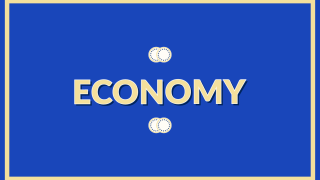México has the same levels of productivity as it did in 1979. If productivity isn’t everything, in the long run it is almost everything.
Fact 1: With an annual productivity growth rate (1992-2011) of just 0.49% we can’t possibly afford to let this issue become mere empty words. In fact, productivity in Mexico has remained unaltered in the last 3 decades: we have the same productivity levels as we did in 1979.

Fact 2: Productivity isn’t everything but in the long run, it is almost everything (Paul Krugman). Productivity is the key variable of economic health and long term growth. According to the 2012 Doing Business report, if we take into account a series of indicators such as the ease of doing business or creating a company, copyright protection laws, access to credit, protection to investors and how easy it is to close down a business, we clearly observe that Mexico is in a better position than other countries which sustained higher growth rates in the last two decades, particularly Brazil, Russia, India, China and South Africa (BRICS). However, from 1991 to the pre-crisis period of 2008, those nations had a productivity rate seven times higher than the one presented by Mexico and, thus, doubled our economic growth rate in that time period.

Fact 3: Economic and financial crises have substantially harmed the growth of productivity in Mexico. While the Tequila Crisis generated a 6.5% decrease of labor productivity, the U.S. recession had a 0.9% negative impact and the 2008 financial crisis produced a cumulative reduction of 5.8%.
Even with the aforementioned facts there still isn’t a clear policy aimed in defending Mexican productivity against neither endogenous (Tequila Crisis) nor exogenous (2008 financial crisis) macroeconomic shocks. For instance, in the case regarding the U.S. crisis, both companies as well as the Federal Government favored flexible contract schemes with the purpose of allowing short term adjustments of labor force in order not to hamper the utility margin of private entities. Therefore, in the event of a revenue decrease, short-term production costs are adjusted and new employees will be hired in the medium-term.
On the other hand, the European case places the emphasis on fixed labor schemes, where revenue drops don’t necessarily imply strong readjustments of the work force in the short term. By maintaining jobs, therefore, consumption, it is expected to reduce the impact of macroeconomic crisis and a swift recovery. Whilst the U.S. case provided better results in the 2008 financial crisis, the two schemes are presented as alternatives in the elaboration of public policies that aim to boost productivity within the country. On that regard, certain modifications on the Federal Labor Act are in the same line as U.S. laws that deal with productivity.

Fact 4: In Mexico there is not a clear policy of boosting and developing comparative advantages based in productivity. In fact, whenever the “productivity” term or the comparative advantages topic comes up, it’s a simple anecdote or mere rhetoric. In practical terms, public officers, particularly Economy Secretaries or Economic Development Secretaries from both federal and state levels, as well as Governors suffer a particular issue: the menu dilemma.
The menu dilemma exists whenever an individual faces a relatively large series of alternatives, which precludes an easy decision-making process. Let us take one example. We all suffer from menu dilemmas when going to a restaurant. Let’s suppose that we arrive to a steakhouse with over 50 meat cuts. In view of so many alternatives, every individual makes one of these choices: (1) asks the waiter for a recommendation; (2) chooses the standard meat cut (a flank steak, if the individual comes from central or southern Mexico), (3) chooses the most expensive alternative in the menu assuming that price implies quality or, on the other hand, picks the cheapest option, taking less monetary risks.
Likewise, with more than 900 types of economic activity in every entity in the country, State secretaries (whether they are from economic development, financial or economy secretariats) make one of three choices: (1) ask for a recommendation about what sector to boost, which is usually linked with interest groups; (2) choose to boost traditional industries (fabrics in Puebla or footwear in León), or eventually (3) support the development of innovative but not necessarily feasible ideas given each state’s production traits (in other words, not everyone can enter the nanotechnology, biofuel or aeronautic industries), or rather choose to support low-aggregate value sectors, current or potential, mainly through subsidies to trade with the aim of providing employment. All these decisions are usually against a productive improvement and lack a concrete analysis on the comparative advantages, real and potential, of each entity.
If you would like to know more about productivity in Mexico, log into the website that CIDAC has specifically created on the matter.
Rafael Ch y Miguel Toro






Comments